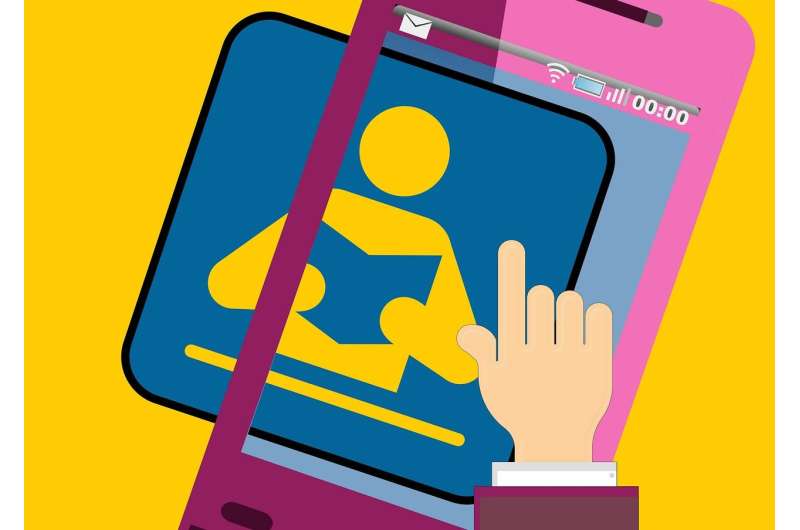Could the social distancing of COVID-19 revolutionize online learning and higher education?

As the rapid spread of the COVID-19 virus prompted residential colleges to suspend classroom instruction, many faculty members are suddenly scrambling to adapt their courses to online media. Former College of Education dean Mary Kalantzis and Bill Cope, both professors of education policy, organization and leadership at the University of Illinois at Urbana-Champaign, research and develop educational technologies—and teach their courses exclusively online. They spoke with News Bureau education editor Sharita Forrest about the potential long-term impact on distance learning and postsecondary education.
Although residential universities adopted digital technologies in various ways and to varying degrees, the bulk of instruction is still classroom-based. Could the current imperative to migrate programs online be a tipping point?
Cope: Higher education has dragged its feet making the move to online learning, keeping lecture theaters, classrooms and textbooks as the core tools of its trade. These place-bound services have stifled the innovation needed to build engaging online learning infrastructures and approaches. E-learning is still viewed as second-best and face-to-face instruction remains the gold standard.
Few institutions were prepared for the sudden shift to online delivery that COVID-19 prompted. They had made awkward attempts to replicate the traditional classroom with video lectures, e-textbooks, online tests and learning management systems that look like old-fashioned syllabi. The result was often a step back into all that was wrong with traditional passive, teacher-centered modes of teaching.
Could online learning ultimately solve multiple problems that are threatening higher education now, such as escalating student debt and tuition rates, and dwindling access?
Kalantzis: Higher education is on the verge of a deep structural crisis because of rising tuition and ballooning student debt. Digital learning provides an opportunity for colleges to scale up programs and scale down costs.
For all citizens to achieve their potential, we need to make it possible for everyone, including nontraditional students with family responsibilities, to access higher education remotely.
But to achieve universal access, the sticker prices for online learning must be vastly reduced. Unless, of course, postsecondary education becomes a publicly supported right like kindergarten-12th grade education. Even then, it must become less expensive for taxpayers and the government to support it.
Is lecture-based learning the optimal modality to engage minds that are immersed in video games and social media?
Cope: That's another crisis facing higher education, which we call "attentional." Sitting in classrooms and listening to lectures is an absurdly suboptimal method for today's students who design their own information feeds and skip through messages on their personal devices.
Supporters say human interaction is what makes in-person learning effective and valuable—but lectures and classroom discussions are not social environments. Students sit silently while the instructor or one student speaks at a time.
Kalantzis: A more social experience is the educator using social media to create videos in short, digestible chunks that prompt discussion and elicit contributions from all students in the feed below the video.
Likewise, during discussions, every student could comment in a social media-like feed, and the discussions could be synchronous or asynchronous. Everyone can be required to respond and to measurably equivalent degrees, while learning analytics track their engagement.
Students are traditionally viewed as consumers of knowledge. Does technology change students' roles?
Cope: E-learning technologies position participants as knowledge producers and co-contributors to knowledge communities. One way to do this is to have students research and make posts to the class activity stream that exemplify themes suggested by the instructor. Or, students could create peer-reviewed projects, where feedback comes from multiple perspectives.
Embedded, on-the-fly formative assessments can track community engagement and personal progress.
In one of our recent eight-week courses with 54 students, there were 14,500 pieces of actionable feedback on 3.3 million datapoints, giving students and instructors a far richer and more reliable picture of learning than ever possible with a traditional test.
Is technology changing how we define learning?
Kalantzis: Today, the devices that we carry serve us as cognitive prostheses. They remember things for us. We can look up more knowledge than we could ever remember. Our apps execute procedures for us.
Accordingly, the foundational objectives of education change. Learning becomes about careful navigation of at-hand knowledge resources and appropriate application of machine-supported procedures. More important than long-memory is higher-order thinking, including critical, creative and design thinking.
In-person learning was ripe for radical transformation. But to reap the benefits of online learning, we need to abandon the current generation of educational technologies—systems and processes that do little more than reverse-engineer traditional classrooms. Simply put, online education can be completely different, and with the right tools, potentially much superior to in-person teaching.
Cope: Now the problem: None of the current main commercial or open-source learning management systems can do what we have just described. The potential is there, but all rely on 1990s teacher-centered, file upload/download architectures. None are instrumented adequately for social knowledge, collaborative learning or artificial intelligence.
In this crisis, we must seize the day and imagine a different future for higher education. We may be on the cusp of the biggest change since the invention of the social processes and artifacts of higher education in early modern times.
Provided by University of Illinois at Urbana-Champaign




















